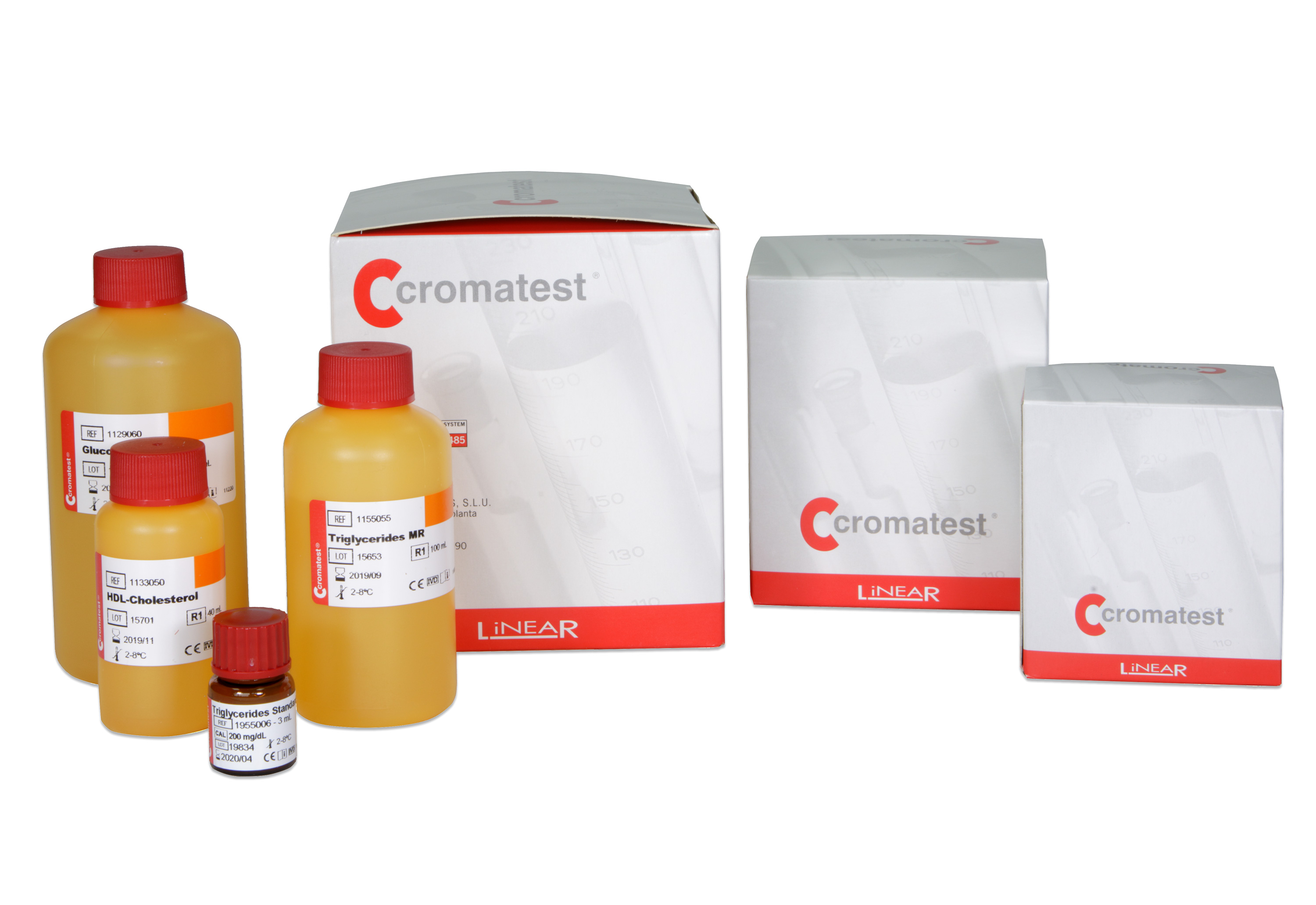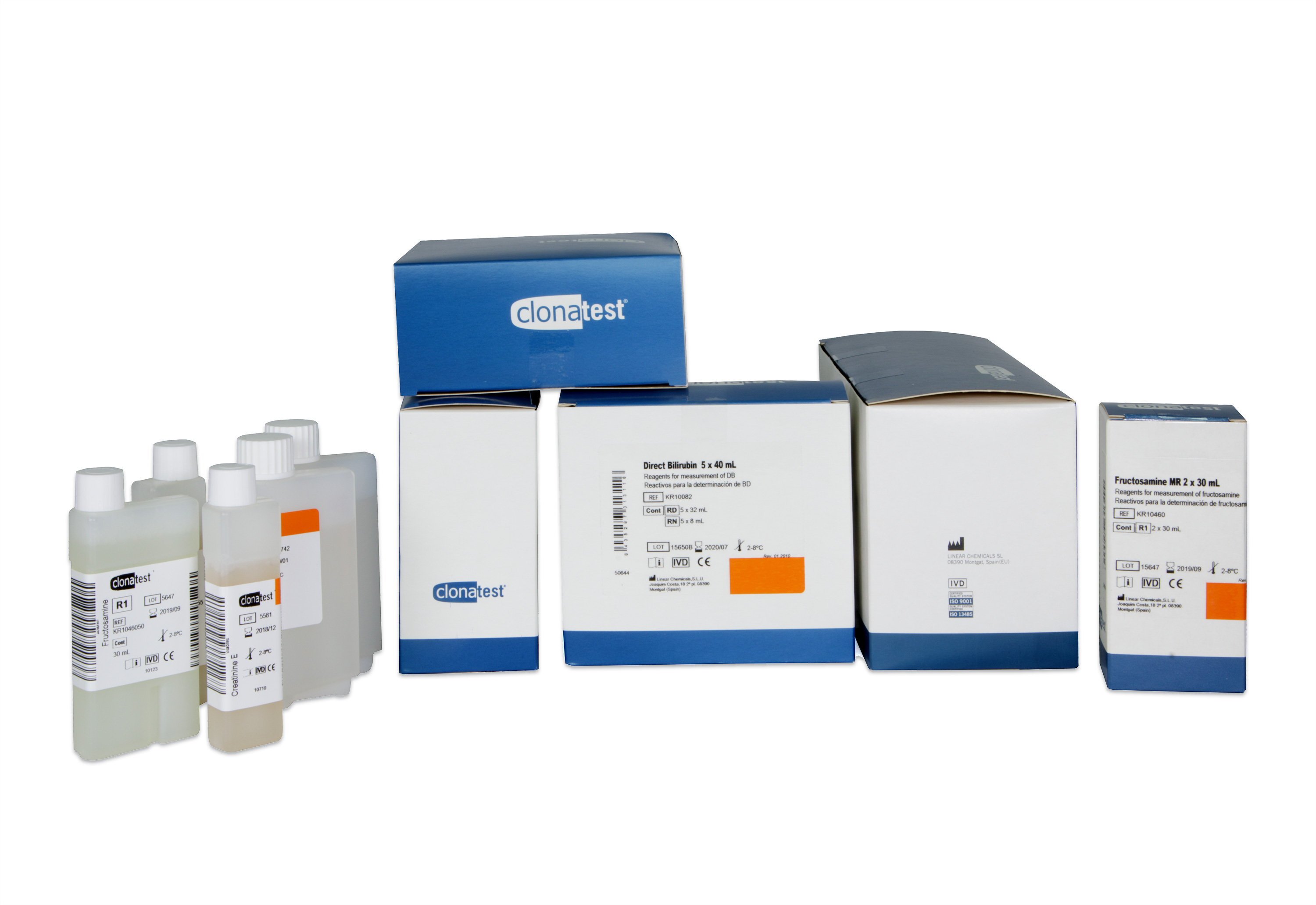

Cromatest
378 results
-

Phosphorus UV 8x30 ml
KR10322 -

Phosphorus UV 2x40 ml
CT10320 -

HDL-Cholesterol Direct 40 ml
1133520This technique employs a separation method based on the selective precipitation of apoprotein-B-containing lipoproteins (VLDL, LDL and (a)Lpa) by the action of phosphotungstic acid/Cl2Mg, sedimentation of the precipitate by centrifugation and subsequent enzymatic analysis as residual cholesterol from the high-density lipoproteins (HDL) contained in the clear supernatant.
-

HDL-Cholesterol Direct 80 ml
1133525This technique employs a separation method based on the selective precipitation of apoprotein-B-containing lipoproteins (VLDL, LDL and (a)Lpa) by the action of phosphotungstic acid/Cl2Mg, sedimentation of the precipitate by centrifugation and subsequent enzymatic analysis as residual cholesterol from the high-density lipoproteins (HDL) contained in the clear supernatant.
-

HDL-Cholesterol Direct 80 ml
1133530This technique employs a separation method based on the selective precipitation of apoprotein-B-containing lipoproteins (VLDL, LDL and (a)Lpa) by the action of phosphotungstic acid/Cl2Mg, sedimentation of the precipitate by centrifugation and subsequent enzymatic analysis as residual cholesterol from the high-density lipoproteins (HDL) contained in the clear supernatant.
-

HDL-Cholesterol Direct 320 ml
1133535This technique employs a separation method based on the selective precipitation of apoprotein-B-containing lipoproteins (VLDL, LDL and (a)Lpa) by the action of phosphotungstic acid/Cl2Mg, sedimentation of the precipitate by centrifugation and subsequent enzymatic analysis as residual cholesterol from the high-density lipoproteins (HDL) contained in the clear supernatant.
-

HDL-Cholesterol Direct 1x40 ml
KR10240This technique employs a separation method based on the selective precipitation of apoprotein-B-containing lipoproteins (VLDL, LDL and (a)Lpa) by the action of phosphotungstic acid/Cl2Mg, sedimentation of the precipitate by centrifugation and subsequent enzymatic analysis as residual cholesterol from the high-density lipoproteins (HDL) contained in the clear supernatant.
-

HDL-Cholesterol Direct 5x40 ml
KR10242This technique employs a separation method based on the selective precipitation of apoprotein-B-containing lipoproteins (VLDL, LDL and (a)Lpa) by the action of phosphotungstic acid/Cl2Mg, sedimentation of the precipitate by centrifugation and subsequent enzymatic analysis as residual cholesterol from the high-density lipoproteins (HDL) contained in the clear supernatant.
-

HDL-Cholesterol Direct 11x40 ml
KR10245This technique employs a separation method based on the selective precipitation of apoprotein-B-containing lipoproteins (VLDL, LDL and (a)Lpa) by the action of phosphotungstic acid/Cl2Mg, sedimentation of the precipitate by centrifugation and subsequent enzymatic analysis as residual cholesterol from the high-density lipoproteins (HDL) contained in the clear supernatant.
-

HDL-Cholesterol Direct 1x60 ml
CT10240This technique employs a separation method based on the selective precipitation of apoprotein-B-containing lipoproteins (VLDL, LDL and (a)Lpa) by the action of phosphotungstic acid/Cl2Mg, sedimentation of the precipitate by centrifugation and subsequent enzymatic analysis as residual cholesterol from the high-density lipoproteins (HDL) contained in the clear supernatant.
-

Hemoglobin 1x5 ml
1134000The Fe(II) of all forms of haemoglobin, with the exception of sulphohaemoglobin, is oxidised by ferrocyanide to Fe(III) to methaemoglobin, which in turn reacts with ionised cyanide (CN-) to form cyanmethaemoglobin, a very stable derivative that absorbs at 540 nm. The intensity of the colour formed is proportional to the concentration of total haemoglobin in the sample.
-

Hemoglobin 4x5 ml
1134010The Fe(II) of all forms of haemoglobin, with the exception of sulphohaemoglobin, is oxidised by ferrocyanide to Fe(III) to methaemoglobin, which in turn reacts with ionised cyanide (CN-) to form cyanmethaemoglobin, a very stable derivative that absorbs at 540 nm. The intensity of the colour formed is proportional to the concentration of total haemoglobin in the sample.